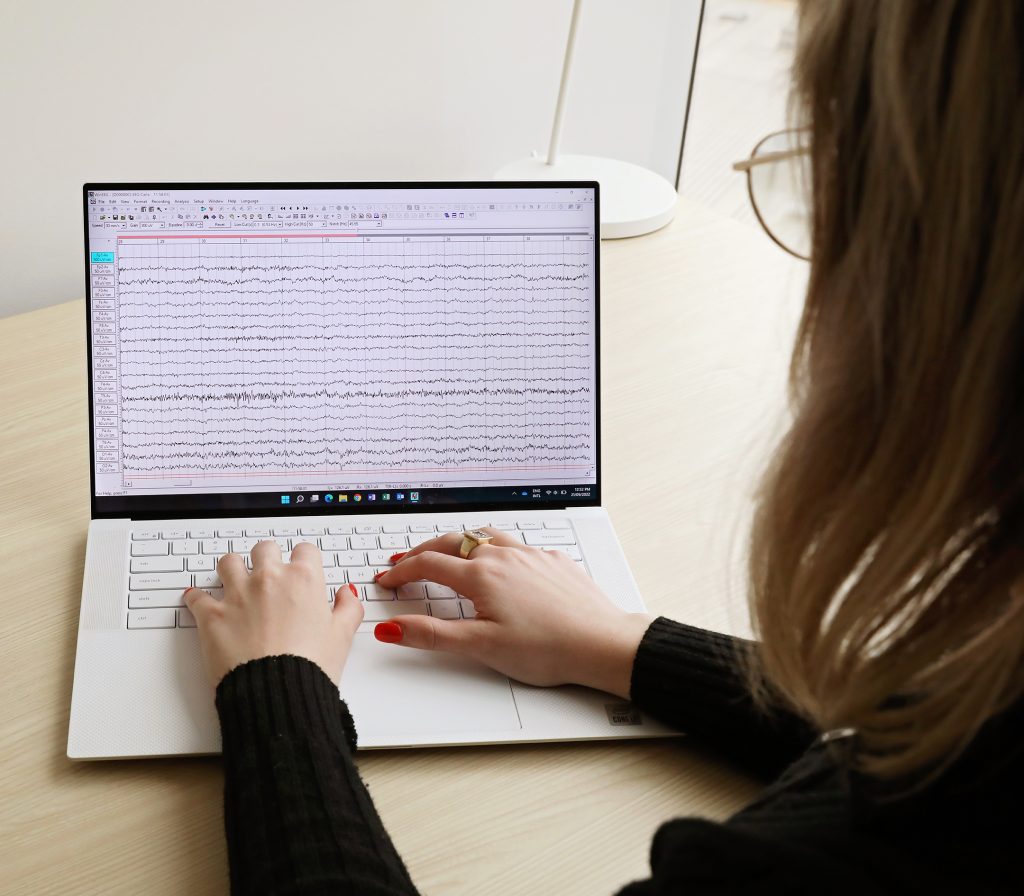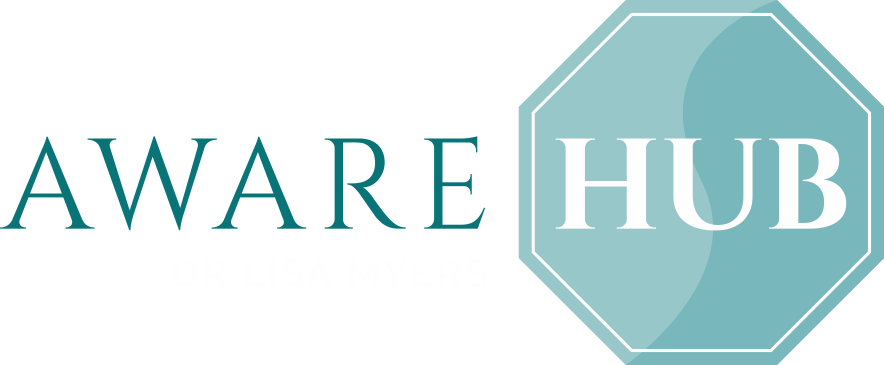Clinical qEEG Assessment
What is qEEG?
Quantitative Electroencephalography (qEEG) is a revolutionary tool in the field of mental health assessment and treatment.
A qEEG is a non-painful, relatively brief (90 min) procedure. The process records and measures brain activity across 26 different locations of the brain and it records the dynamic changes taking place in the brain at rest and during cognitive processing tasks.
By measuring the electrical activity of the brain through electrodes placed on the scalp, qEEG provides an objective measure of brain function. This objective data assists in accurately diagnosing mental health conditions by comparing an individual’s brainwave patterns to established databases. Additionally, qEEG helps assess the benefits of various treatment approaches by measuring changes in brainwave activity before and after interventions. It also guides decisions regarding the suitability of Repetitive Transcranial Magnetic Stimulation (rTMS) treatment by assessing baseline brainwave patterns and identifying whether the targeted brain regions are functioning abnormally. Integrating qEEG into mental health care allows for more accurate diagnoses, personalized treatment plans, and improved patient outcomes.
TYPES OF BRAINWAVES MEASURED (FROM SLOWEST TO FASTEST)
- Delta Waves (0.5 – 4 Hz): Delta waves are the slowest brain waves and are typically observed during deep sleep or in cases of severe brain injury. They are associated with restorative processes, physical healing, and unconsciousness.
- Theta Waves (4 – 8 Hz): Theta waves are commonly seen during light sleep, deep relaxation, meditation, and daydreaming. They are also associated with creativity, intuition, and the processing of emotional experiences.
- Alpha Waves (8 – 13 Hz): Alpha waves are prominent during a relaxed state with closed eyes, such as during meditation or when daydreaming. They are associated with a calm and focused mental state, and their presence can indicate a state of relaxation.
- Beta Waves (13 – 30 Hz): Beta waves are associated with active thinking, concentration, problem-solving, and alertness. They are typically observed during wakefulness and mental engagement, such as when actively working, studying, or participating in a conversation.
- Gamma Waves (30 – 100 Hz): Gamma waves are the fastest brain waves and are associated with high-level cognitive processes, sensory perception, and information processing. They are believed to play a role in memory, attention, and conscious awareness.
Clinical examples
- ADHD: Individuals with ADHD may exhibit excessive slow-wave activity (theta and delta waves) and reduced beta waves in certain brain regions, particularly in the frontal cortex. This pattern of increased slow-wave activity and decreased fast-wave activity is often associated with attentional and executive function deficits seen in ADHD.
- Anxiety Disorders: Anxiety disorders are often characterized by excessive alpha waves, especially in the frontal and central regions of the brain. Another indicator of axiety disorders can be excessive fast-wave activity (beta waves).
- Depression: In individuals with depression, QEEG recordings may reveal an increase in theta and beta bands, particularly in the frontal regions of the brain.
The qEEG can be very helpful in discerning whether behaviour and attention deficits are due to ADHD, processing difficulties, depression or anxiety.


Benefits of qeeg
- Objective Assessment: qEEG provides an objective assessment of brain activity by measuring electrical patterns generated by the brain. It offers valuable insights into brain functioning and helps in identifying abnormalities or deviations from the norm.
- Individualised Treatment Planning: qEEG analysis allows for a personalised approach to treatment planning. By mapping
brain activity, it helps in identifying specific areas of dysfunction or imbalance, which can guide targeted interventions. - Determine Suitability for TMS Treatment: qEEG can assist in determining the suitability of individuals for Transcranial
Magnetic Stimulation (TMS) therapy. By analysing the brainwave patterns, qEEG can help identify specific areas of hyperactivity or hypoactivity in the brain, which can guide clinicians in selecting the most appropriate candidates for TMS treatment. - Diagnostic Aid: qEEG can aid in diagnosing various neurological and psychological conditions, such as attention-deficit/hyperactivity disorder (ADHD), epilepsy, traumatic brain injury (TBI), and mood disorders. It helps clinicians gain a deeper understanding of the underlying brain dynamics contributing to these conditions.
- Treatment Monitoring: qEEG can be used to monitor treatment progress and assess the effectiveness of interventions over time. It provides an objective measure of changes in brain activity, allowing for data-driven adjustments in treatment plans as needed.
- Non-Invasive and Safe: qEEG is a non-invasive procedure that involves placing electrodes on the scalp to measure brainwave activity. It is considered safe and does not involve any exposure to radiation or other invasive procedures.
Please note that while qEEG offers valuable insights, it should always be interpreted by trained professionals in conjunction with other clinical assessments and considerations.
qEEG Procedure
If you have been referred for a qEEG, we will provide a clinical form that your referring clinician needs to complete prior to having the procedure
Prior to having the qEEG, you will be required to complete a comprehensive intake form. This will cover questions related to the following:
- Reason for having the assessment
- Your current and past symptoms
- Current diagnosis
- Current treatment
- Medical and mental health history
- Family history
- Developmental history
Once booked, we will send you an email that outlines all the information needed to prepare for your EEG. It is important to follow these instructions to improve the validity and reliability of the qEEG findings.
In order to measure brain activity reliability, please follow these steps:
- Wash your hair in the morning with shampoo, but no conditioner. Dry your hair well.
- Do not use any products on your hair before or after drying.
- Do not apply make-up or creams to your face.
- Wear comfortable clothes. Do not wear a high collared shirt/jumper
- Do not use alcohol or drugs for at least 8 hours prior to the assessment.
- Try not smoke for at least 3 hours prior to the procedure.
- Do not have any caffeine for at least 3 hours prior to the procedure.
- Discuss your medication with your doctor. If not given any alternate instructions, continue all regular medication.
You will be asked for written consent to perform the qEEG and, if willing, share your information confidentially for the purpose of research and training.
The technician will then guide you through the qEEG process and attach the scalp cap and electrodes for monitoring.
The set-up takes approximately 40 minutes and the EEG recording process, another approximately 50 min. It is a non-invasive and painless process. Conduction gels and alcohol wipes are used. Please report any product allergies or sensitivities to your clinician.
The raw EEG data collected during your asssessment will be sent to a third party to analyse and create a report. The report can take up to two weeks to finalise. We will provide you with the completed report to take back to your referring clinician. Should you need to consult with one of our clinicians, as an existing client of our practice we will prioritise your appointment but there will still be a wait time depending on a doctor’s immediate availability.

